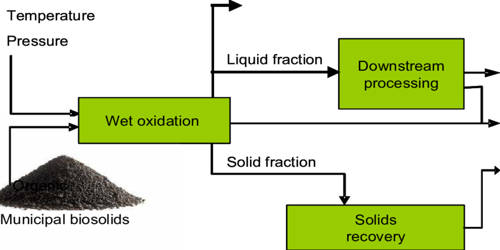Chilblains
Definition: Chilblains (CHILL-blayns) are small, itchy swellings on the skin that occur as a reaction to cold temperatures. It also is known as perniones (sing. pernio), chill burns and perniosis. Chilblains can be uncomfortable but rarely cause any permanent damage. They normally heal within a few weeks if further exposure to the cold is avoided.
Chilblains are often confused with frostbite and trench foot. Damage to capillary beds in the skin causes redness, itching, inflammation, and sometimes blisters. It can be reduced by keeping the feet and hands warm in cold weather and avoiding extreme temperature changes. Chilblains can be idiopathic (spontaneous and unrelated to another disease), but may also be a manifestation of another serious medical condition that must be investigated.
Treatment involves protecting yourself from the cold and using lotions to ease the symptoms. Chilblains don’t usually result in permanent injury. But the condition can lead to infection, which may cause severe damage if left untreated.
Here are some key points about chilblains.
- chilblains are a localized form of vasculitis
- full recovery can be expected within a couple of weeks
- the best method to avoid chilblains is to wrap up warm
- sores and blisters occur only in rare cases
- if untreated, they can lead to scarring and ulcers
The best approach to chilblains is to avoid developing them by limiting our exposure to cold, dressing warmly and covering exposed skin.

Causes, Sign, and Symptom of Chilblains: No one knows exactly what causes chilblains. Chilblains are caused by an abnormal skin reaction to cold. They tend to occur on ‘extremities’ that easily become cold – that is, our toes, fingers, nose, and earlobes. However, other areas of skin sometimes develop chilblains when they become cold.
Rewarming of cold skin can cause small blood vessels under the skin to expand more quickly than nearby larger blood vessels can handle. This results in a bottleneck effect and the blood leaking into nearby tissues.
Some people are more at risk of chilblains than others.
This includes people with:
- poor circulation
- a family history of chilblains
- regular exposure to cold, damp or draughty conditions
- a poor diet or low body weight
- lupus – a long-term condition that causes swelling in the body’s tissues
- Raynaud’s – a common condition that affects the blood supply to certain parts of the body, usually the fingers and toes
- People who smoke are more at risk of chilblains as nicotine constricts blood vessels.
Chilblains can also occur on areas of the feet exposed to pressure, such as a bunion or a toe that’s squeezed by tight shoes.
Chilblains are very itchy. A burning sensation is also typical. They are usually red at first but may become purple. Pain and tenderness over the chilblains often develop.
- The areas most affected are the toes, fingers, earlobes, nose.
- Blistering of an affected area
- Burning and itching sensation in extremities
- Dermatitis in extremities
- Digital ulceration (severe cases only)
- Erythema (blanchable redness of the skin)
- Pain in the affected area
- Skin discoloration, red to dark blue
- Chilblains usually heal within 7–14 days.
Doctors say that signs and symptoms will usually go away within a couple of weeks on their own if the patient avoids exposure to cold. More rarely, recovery may take months.

Treatment and Prevention of Chilblains: Diagnosing chilblains is straightforward. If symptoms are present and the patient has been exposed to cold, a doctor will diagnose chilblains. The doctor will want to rule out other conditions such as lupus, Raynaud’s phenomenon, erythromelalgia, and ischemia. If the diagnosis is in doubt, in rare cases, a skin biopsy may be taken.
Although chilblains are uncomfortable, they do not usually cause any permanent damage. They will usually heal on their own if further exposure to the cold is avoided.
- Keep the affected areas warm. This means staying out of the cold, or wearing warm gloves, socks, etc, when outdoors.
- A course of vitamin B, especially nicotinic acid, helps improve circulation and may completely treat the chilblains.
- Making sure the affected skin is cleaned with an antiseptic and gently bandaged to prevent infection
- Steroid creams are no longer recommended for the treatment (or prevention) of chilblains.
- Nifedipine, a vasodilator, may help in more severe or recurrent cases. Vasodilation helps reduce pain, facilitate healing and prevent recurrences. It is typically available in an oral pill but can be compounded into a topical formula.
- Apply a mixture of friar’s balsam and a weak iodine solution.
- Avoid restricting the affected area.
Medicines are not usually needed. A medicine called nifedipine can open wide (dilate) the small blood vessels and may help to treat chilblains which are not settling within the normal time. Occasionally it may also be used to prevent chilblains in the winter months in people who have repeated symptoms.
To prevent chilblains:
- Avoid rapid changes in temperature (including from cold to hot).
- Wear warm shoes, socks, and gloves.
- Wear a hat and a scarf to protect the ears and the nose.
- Avoid tight-fitting socks/shoes.
Other
- Healthy diet, low in inflammatory foods
- Exercise at least four times a week to improve circulation
If people’s skin is exposed to cold, it’s helpful to rewarm it gradually because sudden rewarming of the cold skin may worsen chilblains.
Information Source:
















